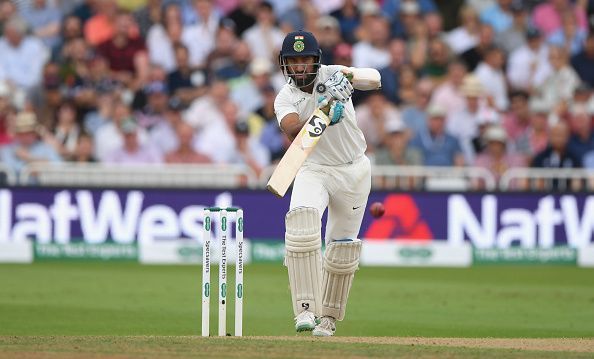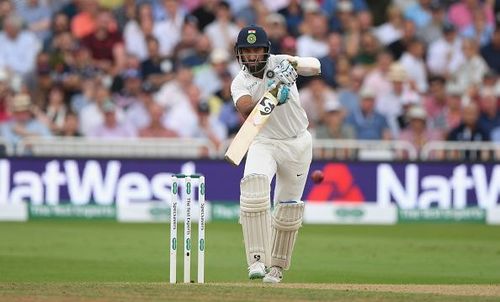
Cheteshwar Pujara: Cramp. Cripple. Crash.

A triple hundred at the Under-14 level, a double century against England in England at under-19 level,349 runs with an average of 116 in the ICC under-19 CWC 2006. With all these feats, a guy with a square jawline and dense hair from Saurashtra was making his way into the news day in and out. The cricket fanatics were enthralled by the level of consistency this guy was showing at every level of junior cricket.
Cheteshwar Pujara swooped in his way to the Ranji team soon. A year or so down the line, the same guy was featured in small newspaper articles here and there. He was scoring double centuries for breakfast and triple centuries for tea at the Ranji trophy. After making a truckload of runs for several years at the flat Rajkot pitch, Pujara caught the eyes of the selectors.
In the era of franchise cricket, his focus and determination in the longest format of the game was much needed in this era. With a barbaric batting methodology and an ardent batting style, Cheteshwar Pujara was considered as someone who would fill the shoes of the great Rahul Dravid. Although both have totally different techniques, the methodology and the compassion towards the longest format was something which entrenched the comparisons between these two batsmen.
Cheteshwar Pujara earned his inevitable maiden call-up in the home series against Australia in 2010. After getting out to an unplayable grubber in the first innings, he walked out to bat in the number 3 position in the fourth-innings, instead of his 'predecessor' Rahul Dravid. He made an effortless 72 on a tricky 4th innings run-chase on a dry and turning wicket in Bangalore, becoming only the fifth Indian to score a 4th innings half-century on debut.
After a poor performance against the Proteas in the 2012 series, he was ruled out of the English and Aussie tours down-under. He made a full recovery and returned to the side in the home season of 2012. His 'predecessor' had retired from international cricket, and it was his time to fit in the most dependable shoes of Indian batting line-up. He took no time and scored a grit knock of 206 against England. It was followed by a lone battle of 136 in Mumbai, where spin seemed to be an alien technique for the hosts. Finally, he gained the foundation for the highest level of cricket he was made for-Test cricket.
Pujara continued to score runs in abundance at the home turf, however, he could not be termed as a versatile cricketer with a shortage of runs in 'away' Tests. It was in 2014 when he scored his first Test century in the 'SENA' against South Africa at the Wanderers against the likes of Dale Steyn and Morkel.
Per contra, he could not replicate the scores in New Zealand. His poor run continued in England and was eventually dropped from the side in Australia. He was not fitting in the 'attacking' line-up of the new skipper- Virat Kohli. However, whenever given a chance, he scored his milky centuries. Never the less, Virat has now accepted the importance of Pujara in the Test side as the latter has become the second most dependable batsman, after the skipper himself, in the current Indian batting card. With a century in England earlier this year, Pujara has proved his worth in the side.
Che Pujara is extremely conservative with his mode of play. He looks at his life lies in his wicket. He will never be someone who would make the crowd cheer and entertain, the balls off his blade would seldom wallop over the boundary ropes. But, that's Pujara's treasure. He is someone who is built on the cricketing merit, spending more time in the nets than in the gym, taking lessons from his father, Arvind Pujara, at the end of each day. He would continue to do the thankless job of guarding the middle order against the new ball.
He cramps the opposition, wears them down, pierce them into capitulation, and slowly starts ticking off the runs. Hopefully, for the coming future, whenever India lose its first wicket, Pujara would immediately get into his task- Cramp. Cripple. Crash.